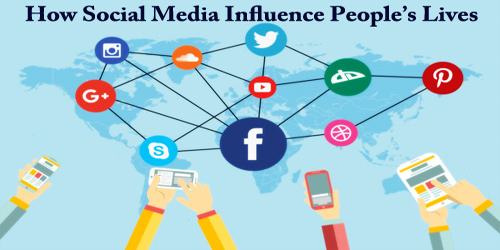I went out to learn more about digital mental health resources for Latinx youth this year as part of National Minority Mental Health Awareness Month. Youth who identify as “Latinx,” or who have ancestry in a Latin American cultural or racial identity, are a large and diverse group in the United States.
With origins in 20 Latin American countries and Spain, 25 percent of the 43 million adolescents in the United States between the ages of 10 and 19 identify as Latinx. Young Latinx persons experience some major gaps in mental health. Youths of Latinx ethnicity are more likely than teens of other ethnicities to show signs of depression.
A larger percentage of Latinx high school students than Black, White, or Asian students experienced chronic feelings of melancholy or hopelessness in 2021 (46%), and this number has consistently increased over the preceding few years. Less than kids from other ethnic backgrounds, Latinx youth are also less likely to have a sense of community at school. The immigrant experience, family concerns, community and educational elements, as well as other factors, have been demonstrated to have an impact on Latinx youths’ experiences with mental health. And, compared to White youth, Latinx youth are less likely to receive mental health services.
Positively, research indicates that community-based and culturally appropriate treatments have the potential to increase young Latinx people’s access to mental health care. I wondered whether culturally-tailored digital communities might be particularly supportive for Latinx youth.
What does it mean to “culturally-tailor” a mental health support tool to a specific population?
Making sure an intervention is culturally appropriate for the group it is intended to assist is known as cultural tailoring. Culturally-sensitive therapy considers a client’s history, ethnicity, values, and/or other aspects of their identity when providing care.
Marvyn Arévalo Avalos, a psychologist and postdoctoral scholar in the Latinx Center of Excellence in Behavioral Health at the U.C. Berkeley School of Social Welfare, and an expert on this topic says to culturally tailor a mental health intervention is to “consider how a person’s culture and lived experiences shape their attitudes toward, understanding of, and approaches to addressing their mental health.”
Arévalo Avalos provides examples of cultural tailoring, including, “translating content to a person’s preferred language(s), adding culturally relevant messages and images, and including people from those populations in the design/implementation process.”
Why might Latinx teens need mental health support just for them?
Culture plays a large role in explaining why Latinx teens are less likely than their peers to seek and receive mental health support. Arévalo Avalos explains that there are unique socio-political challenges that may negatively influence Latinx teens’ mental health.
Some of these unique experiences include “chronic stress and a negative impact on their mental health due to issues of racism and discrimination, anti-immigrant sentiment and anti-immigrant policies, family separations due to forced migration/deportation, parent-child conflicts arising from acculturation gaps, growing up in poverty or in under-resourced communities, or stigma related to seeking mental health supports.”
Some of these difficulties were explained by a recent study on caregiver attitudes about treatment and troubles with mental health. Researchers from the University of Denver and the University of Kansas discovered that as parents assimilated into American culture, they were more likely to see their children’s mental health issues as serious and deserving of attention.
What are some ways technology can help Latinx young people with their mental health?
Arévalo Avalos believes technology can help to promote health equity among Latinx young people by facilitating culturally-tailored support. When technology-based supports are designed with Latinx youth in mind, they are most likely to be effective. His examples include, “a mental health wellness app offered in English, Spanish, or ‘Spanglish’ to allow Latinx young people to engage with the content in the language(s) they prefer,” and teletherapy programs that connect young people to “Latinx-identified, and other culturally-humble therapists.”
What does the research show on the intersection of technology and mental health support for Latinx young people?
Adults and text messaging have been the main focus of a lot of the work with customized interventions for Latinx groups. Text messaging was successful in giving reminders to take medication and attend medical/mental health visits, especially when a live person, like a community health worker, provided support, according to a 2021 evaluation of 23 research of mobile health interventions for Latinx populations. Further, the combination of text messaging and more engaging interactive support, like from a mobile app, was promising.
The Latinx community may benefit even more from digital interventions than White people. In a study that used a text message intervention with Latinx and White adults, researchers at the U.C. Berkeley found that after receiving two text messages a day for 60 days, Latinx adults had a greater reduction in symptoms of depression than White adults, and were more likely to say they would want to continue the program beyond two months and recommend it to a friend.
More studies are needed that test digital interventions with Latinx teens. Arévalo Avalos points out that Latinx youth are just as likely as their White and Black counterparts to have a smartphone or go online for health-related information, suggesting culturally-tailored digital supports are likely to be as helpful for teens as they are for adults. There is a need to create more and better digital supports that aid the specific experience of Latinx youth today.
How can we make better digital mental health support for Latinx youth?
Research and experience have helped guide best practices in designing digital interventions for Latinx youth.
- Consider diversity within the Latinx community. While studies like those described in this piece are important for understanding how to better support Latinx youth, Arévalo Avalos points out that “the Latinx community is not homogenous, and, thus, to ‘culturally-tailor’ a support for this community also means to consider cultural differences within Latinx youth.” Working together with Latinx youth from a variety of backgrounds will probably ensure that digital support represents their unique experiences and viewpoints.
- Make access easy. Arévalo Avalos cautions that, inasmuch as technology can facilitate access to mental health supports, it can also create further disparities by leaving out those who don’t have access to the latest and greatest technology. It is possible to support all adolescents, regardless of their phone or data plan, by designing apps that don’t require a data connection for all content or offering numerous ways for a youngster to access a live support system (e.g., texting, phone, and/or video).
- Consider levels of tailoring. True “cultural tailoring” goes beyond just language translation (e.g., Spanish for Latinx youth who prefer it), and takes into account the rich experiences that embody a person’s mental health.
Here are some existing resources designed to support the mental health needs of Latinx individuals:
- National Alliance on Mental Illness: Resources for mental health in the Latinx community
- Therapy for Latinx: A directory for Latinx individuals
- Psychology Today: A directory of Latinx therapists
A curated list of additional resources for the Latinx community It is crucial for Latinx youth’s health and wellbeing as the summer winds down and they return to school to have access to digital mental health care that is tailored to, supportive of, and responsive to their needs.
















